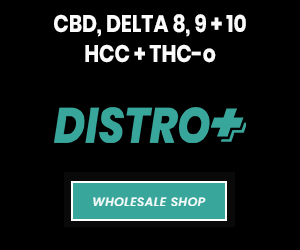CBD Companies Should Prepare Now for Product Liability Claims
HempUncategorized December 11, 2018 MJ Shareholders

 We counsel our cannabis (and non-cannabis) clients extensively on product liability issues, and have warned them that the federal illegality of their products will not shield them from the same products liability risks faced by companies in other industries. We extend the same warnings to our cannabidiol (CBD) clients, who, if they are operating outside of a state-run cannabis licensing regime, are actually in a position of even greater risk. Lack of regulation in the CBD space is to the detriment of consumers, who often cannot be certain what ingredients the products they purchase actually contain, or whether those products are safe and free of contaminants.
We counsel our cannabis (and non-cannabis) clients extensively on product liability issues, and have warned them that the federal illegality of their products will not shield them from the same products liability risks faced by companies in other industries. We extend the same warnings to our cannabidiol (CBD) clients, who, if they are operating outside of a state-run cannabis licensing regime, are actually in a position of even greater risk. Lack of regulation in the CBD space is to the detriment of consumers, who often cannot be certain what ingredients the products they purchase actually contain, or whether those products are safe and free of contaminants.
It’s only a matter of time before harmed consumers start suing CBD companies alleging defective, dangerous, or mislabeled products (and Proposition 65 violations). Here are some posts we’ve written about product liability in the cannabis industry, which are highly relevant to CBD companies as well:
Recently, Vice published an alarming article about a new study that detected synthetic marijuana and a compound in cough syrup in one CBD company’s vape products. The article summarizes the findings of Michelle Peace, a toxicologist and vaping expert at Virginia Commonwealth University who evaluates how electronic cigarettes are being used for substances other than nicotine. Peace received a tip that a product supposedly containing only CBD had psychedelic effects for a consumer. Upon further testing, she discovered that out of nine products tested, four contained synthetic marijuana (5-fluoro MDMB-PINACA (5F-ADB)) and one contained dextromethorphan, an ingredient in cough syrup.
Unfortunately, these findings do not surprise us. We’ve long been wary of the proliferation of CBD products with very little regulation from federal or state governments. Some states have taken steps to combat these unregulated products. In July of this year, the California Department of Public Health’s Food and Drug Branch (CDPH) issued an FAQ on CBD in food products stating:
“[A]lthough California currently allows the manufacturing and sales of cannabis products (including edibles), the use of industrial hemp as the source of CBD to be added to food products is prohibited. Until the FDA rules that industrial hemp-derived CBD oil and CBD products can be used as a food or California makes a determination that they are safe to use for human and animal consumption, CBD products are not an approved food, food ingredient, food additive, or dietary supplement.”
In California, CBD products derived from marijuana and produced by licensed cannabis manufacturers may be sold, but unregulated, industrial-hemp-derived products intended for consumption may not.
So, what should CBD companies be doing to protect themselves from consumer product liability claims? Of course, we recommend implementing robust testing protocols that are in line with those required by state agencies of cannabis manufacturers. The first step in protecting your company is ensuring that your products are safe. In the same vein, be sure that everything you state about your product is accurate.
And oftentimes, one of the best ways to mitigate against product liability claims is to institute a product recall, and having a product recall plan in place will facilitate this. In crafting that plan, below are some recommendations we’ve made before, which bear repeating:
- Create an overall recall strategy.
- As part of your recall plan, create definitions and standards for classes of recall and the depth and scope of any given recall. If your state or local laws do not provide basic recall standards for cannabis businesses, check out the FDA’s website under Guidance for Industry: Product Recalls, Including Removals and Corrections.
- Appoint a recall committee within your company, to be led by experienced personnel capable of evaluating and investigating product complaints to determine if a recall is warranted. This also entails your developing a product complaint form that will be utilized by customers. It is important to learn about product problems as early as possible.
- Develop a complaint receipt and evaluation method to ensure your product complaint processing and investigations are logical, efficient, and comprehensive. There are few things worse than receiving product safety complaints and then ignoring them until the situation is out of control.
- Truly ponder what your product complaint investigation will entail. What facts should your recall committee be gathering when seeking to determine if a product complaint is valid or if a recall is warranted? What should your recall look like, as based on the facts and circumstances and the threat your product may pose to consumers and vendors?
- Create a distribution list so your product recall committee can quickly and easily identify all affected products and product lots for disposition and potential destruction. The distribution list should — at minimum — include the names of all affected consumers and vendors, their contact information, and the dates on which the products were sold to them or consumed by them, and it should also include any side effects, injuries, or illnesses resulting from product use. Time is of the essence here. Our firm had a regional food client that inadvertently failed to issue a recall notice to one of many supermarket chains to which it sold its food. This supermarket chain was so angry about having been kept out of the loop that it refused ever to purchase our client’s product again. Then other supermarket chains learned of our client’s failure to notify this one supermarket company and they too ceased all of their purchasing. Needless to say, our client company no longer exists. Don’t let this sort of thing happen to you.
- Institute a method of stock recovery so all tainted product in inventory is effectively quarantined from sale and distribution.
- Generate your recall notice and be very careful with your wording in how you alert vendors and consumers to the recall. You want to effectively communicate that a product has been affected and how to deal with that, but you also want to minimize whatever liability your product problems may create for the company. On a case by case basis, consideration should also be given to drafting a press release to help the company’s PR. For this you absolutely need attorney help.
- Make sure to as quickly as possible (preferably in advance) alert your outside advisors (your lawyers, your insurance broker, etc.) regarding your recall.
- Set out in your recall plan your options for product disposition. Will you destroy a product? Cleanse and then repurpose it? Lay out your options in your plan now so you are not scrambling to try to figure out your possible options later, when you have no time to do so.
- Record everything you do. Document every effort you make and record all your communications with consumers and vendors. If there is a legal action later, you will want to be able to show the court that you took all reasonable steps to ensure consumer safety.
In addition to the foregoing, we also recommend regular compliance audits to ensure that your procedures are safe, legal and effective. It is only a matter of time before CBD product liability claims start to proliferate, and CBD companies should prepare for that reality now.
MJ Shareholders
MJShareholders.com is the largest dedicated financial network and leading corporate communications firm serving the legal cannabis industry. Our network aims to connect public marijuana companies with these focused cannabis audiences across the US and Canada that are critical for growth: Short and long term cannabis investors Active funding sources Mainstream media Business leaders Cannabis consumers
Read Across America Cannabis
Uncategorized Mar 24, 2025









